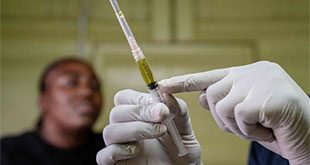
By Independent Correspondent
Girls confused, NGOs want sensitisation, and parents say it will not stand in the way of culture
Shadrach Ruto says since 2010 when Uganda passed the law against female circumcision, or Female Genital Mutilation (FGM) as the lawmakers call it, people in his Korite village in Kween District in the Sebei heartland had accepted it. He says women no longer want to undergo this cultural ritual.
But 26-year old Ruto says if he had a daughter, as he indeed does; only that she’s just five years old, he would ensure she’s circumcised.
“Because it reduces sexual desire, [which] reduces prostitution, HIV/Aids, and so she will be able to stay in school,” Ruto reasons in his native Kupsabiny, the language of the Sebei in eastern Uganda.
Yet it’s for fear of contracting HIV/Aids that 14-year-old Ashura Chemutai, in Primary Seven at Greek River Primary School, told her parents, from whom she first learnt about the anti-FGM law last year, how she didn’t want to be circumcised.

Her parents, she says, didn’t press the matter even if they made it clear the law wasn’t going to stand in their way. They had no reason to insist. After all, it wasn’t circumcision year.
Chemutai is sure though that this being circumcision year, her parents are going to resurrect the subject and it’ll not be up for discussion.
Even more telling, Chemutai says she doesn’t associate much with circumcised girls because she feels inferior to them. It’s a feeling, she adds, that is shared among most uncircumcised girls even if, among her peers, opinion about circumcision is equally divided with as many girls in support of it as those against.
“Imposing a law isn’t easy,” notes Betty Chelimo, who teaches at her school and believes Chemutai will accept to be circumcised when the exercise begins in December.
“People are still attached to their culture and don’t want to leave it just like that,” Chelimo says.
The way Sebei culture is constructed, Chelimo explains, attaches what is seen as benefits to circumcision. For instance, uncircumcised women are not allowed to collect food from granaries or to enter the cattle kraal to scoop dung to paste their house floors. They are scorned in public and, when they marry, their husbands are reluctant to show them off.
It’s no surprise then that some married women have been known to come back and ask to be circumcised. As Chelimo sees it, only an increase in education and awareness will help stop the practise. She says educated people have shown a tendency to shun circumcision.
Chelimo’s observations are borne out by a late 2011 baseline study on female circumcision that the alliance of Kapchorwa Civil Society Organisations (KCSOA) conducted in four major sub-counties.
The survey shows that in as much as the law has helped reduce it, the practice is still cherished and strongly guarded by the elderly in the community who are influential enough to perpetuate it in clandestine ways.
Indeed, noted Miriam Cherukut, the Programmes Coordinator at KCSOA, the fear of the law has pushed circumcision underground, making it difficult to track and mitigate.
The fear results mainly from the clause in the law that provides for arresting both the surgeon and the patient.
“Rather than be quick to penalise those who break the law, the government should step up sensitisation and awareness [against female circumcision],” advised 66-year-old Abdu Lwatama, who refused circumcising his two daughters against all caution from friends that they’d have problems if he didn’t.
As he noted, the law was largely mooted and driven from Kampala instead of the community whose practise it was targeting. As such, “Someone who is attached to his culture feels he is no longer allowed to go on with it and that it is being destroyed.”
Lwatama believes, like Chelimo, that only education and awareness will help change much of the practise.
Key facts
- Female genital mutilation (FGM) includes procedures that intentionally alter or cause injury to the female genital organs for non-medical reasons.
- The procedure has no health benefits for girls and women.
- Procedures can cause severe bleeding and problems urinating, and later cysts, infections, infertility as well as complications in childbirth increased risk of newborn deaths.
- About 140 million girls and women worldwide are currently living with the consequences of FGM.
- FGM is mostly carried out on young girls sometime between infancy and age 15.
- In Africa an estimated 92 million girls 10 years old and above have undergone FGM.
- FGM is a violation of the human rights of girls and women.
Female genital mutilation (FGM) comprises all procedures that involve partial or total removal of the external female genitalia, or other injury to the female genital organs for non-medical reasons.
The practice is mostly carried out by traditional circumcisers, who often play other central roles in communities, such as attending childbirths. However, more than 18% of all FGM is performed by health care providers, and this trend is increasing.
FGM is recognized internationally as a violation of the human rights of girls and women.
The world is only just beginning to see glimpses of cyber war – in the denial-of-service attacks that accompanied the conventional war in Georgia in 2008, or the recent sabotage of Iranian centrifuges. States have the greatest capabilities, but non-state actors are more likely to initiate a catastrophic attack
Source: World Health Organisation
 The Independent Uganda: You get the Truth we Pay the Price
The Independent Uganda: You get the Truth we Pay the Price





